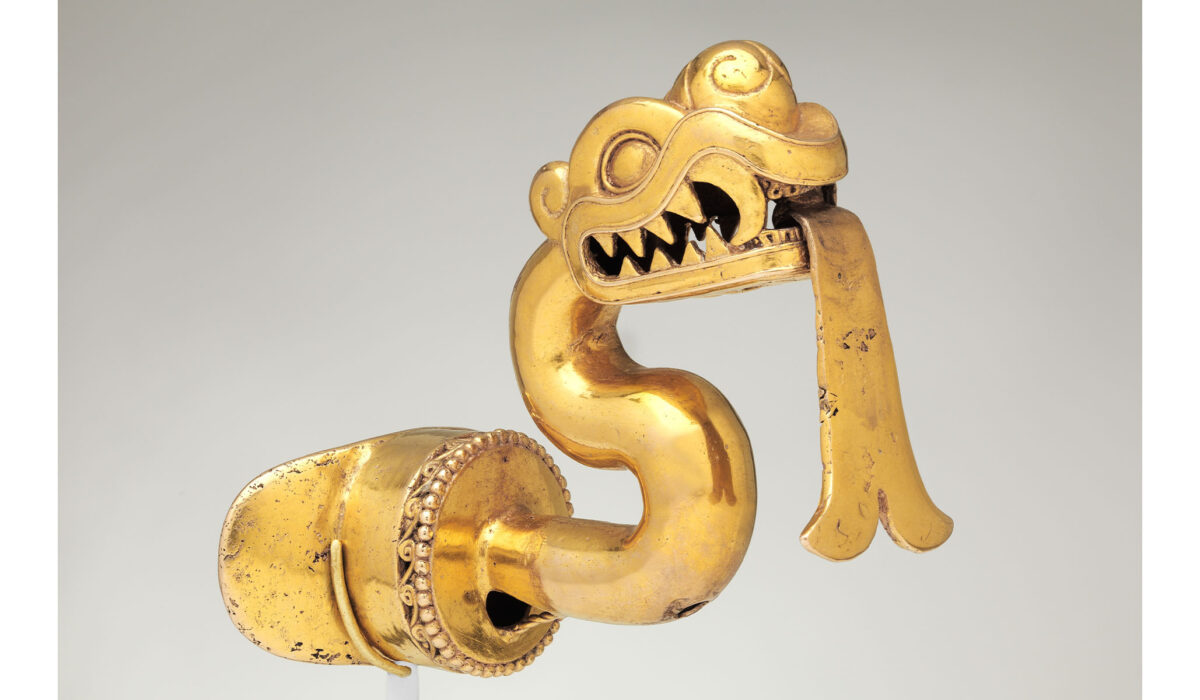An Unseen Tribute: Art Honoring Michael and Nelson Rockefeller
“The art is fantastic, and it’s a tribute to Michael and Nelson Rockefeller.” That line summarizes a reaction many viewers have when they encounter objects linked to the Rockefeller collection. The pieces invite a close look at craft, history, and personal legacy.
The central object here suggests a serpent motif rendered as a labret, a lip ornament whose shape and pattern speak to skilled metalwork and symbolic language. Such items often carry meanings tied to identity, status, and myth within their original cultures. The work’s details reward viewers who slow down and examine texture, tooling marks, and form.
Michael Rockefeller is a figure tied to art, exploration, and a tragic disappearance that deepened public interest in the objects he sought. Nelson Rockefeller’s name evokes a long involvement with collecting, philanthropy, and public life that shaped museum collections across the United States. Together they represent both an enthusiasm for non-Western art and the personal stories that followed those interests.
When an object is presented as a tribute to these two men, it raises questions about context. Is the piece meant to honor collectors, to celebrate craft, or to prompt reflection on how objects moved from their communities into Western hands? Museums and private displays now face deeper scrutiny on provenance and the pathways through which artifacts entered collections.
Provenance matters for reasons beyond paperwork; it connects objects to living communities. Clear histories can reveal whether an item was acquired through trade, gift, purchase, or less ethical means. That clarity affects how exhibitions are framed and whether repatriation conversations should begin.
Conservation plays a practical role in keeping the object legible for future study and appreciation. Conservators document materials, techniques, and past repairs in careful reports that preserve technical knowledge. Conservation choices also influence how an artifact is interpreted by audiences and scholars.
Exhibiting the work alongside context about the Rockefeller connection can educate visitors about the era of collecting and its consequences. Labels and catalog essays that explain both aesthetic value and historical biography offer a fuller picture than celebratory text alone. When done well, such presentations let visitors admire craft while understanding the tangled histories behind many museum shelves.
There’s also an ethical and cultural conversation to be had about honoring collectors versus the cultures that produced the art. Community voices and descendant communities add essential perspectives on whether items should stay in Western institutions or return to local stewardship. Listening to those voices changes the terms of what a tribute really means.
Ultimately, the object stands as both a work of art and a prompt for discussion. Viewers can appreciate technique and beauty while grappling with provenance, memory, and cultural stewardship. That combination turns a single piece into an entry point for broader questions about collection practices and respect for source communities.


Comments 1
so much good information on here, : D.